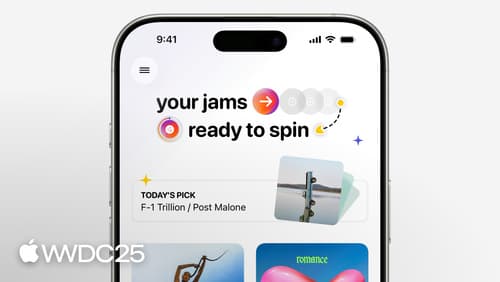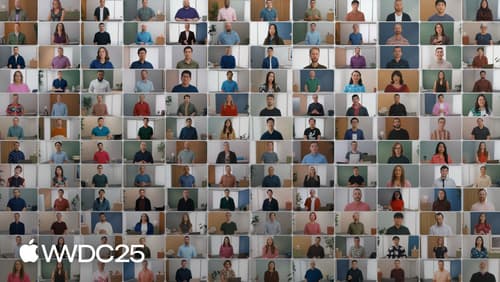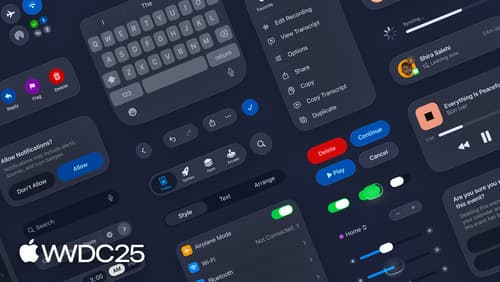design lab
Asked on 2025-06-16
1 search
If you're interested in design labs or design-related content from Apple's WWDC, you might want to explore the session titled "Design foundations from idea to interface" (wwdc2025-359). This session covers various aspects of design, including structure, navigation, content, and visual design. It provides insights into creating intuitive and inviting app experiences, focusing on visual hierarchy, typography, and color.
Additionally, the session "Get to know the new design system" (wwdc2025-356) introduces Apple's new design system, Liquid Glass, which offers a cohesive and adaptive design language across platforms. This session might be particularly useful if you're looking to understand the latest design updates and how to implement them in your apps.
For a more hands-on approach, you can also consider the "Welcome to WWDC25" session (wwdc2025-364), which mentions the opportunity to request one-on-one lab appointments with Apple experts to discuss your projects and get personalized advice.
If you have specific questions about design elements or need further guidance, these sessions would be a great starting point.

Design foundations from idea to interface
Great apps feel clear, intuitive, and effortless to use. In this session, you’ll discover how app design can elevate functionality, communicate purpose, guide people through your content, and use components thoughtfully to keep the experience simple without losing impact. This session is for designers and developers of all skill levels — as well as anyone curious about design.

Welcome to WWDC25
There’s so much to dive into at WWDC25. Here’s a quick guide to help get you started.

Get to know the new design system
Dive deeper into the new design system to explore key changes to visual design, information architecture, and core system components. Learn how the system reshapes the relationship between interface and content, enabling you to create designs that are dynamic, harmonious, and consistent across devices, screen sizes, and input modes.
